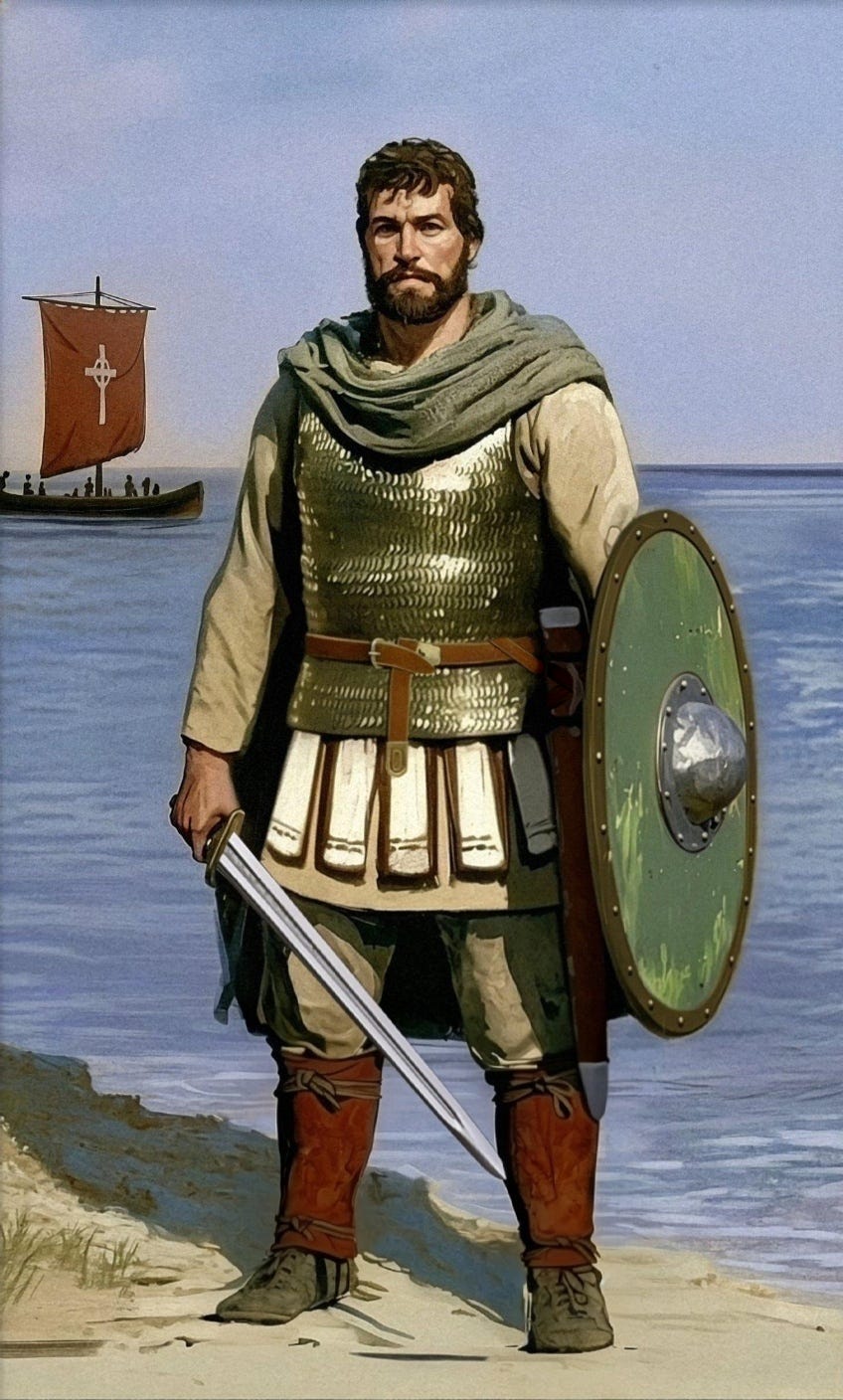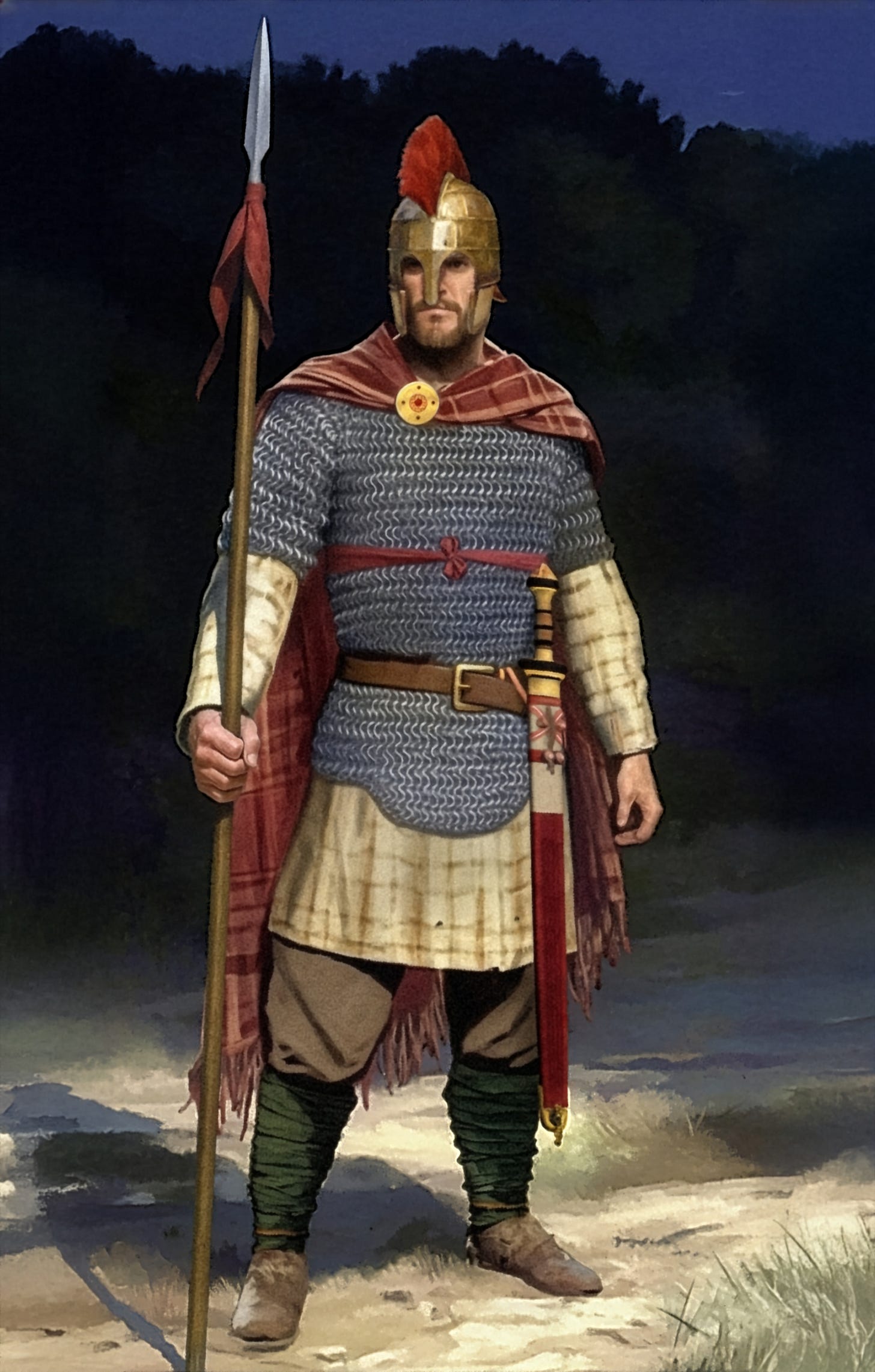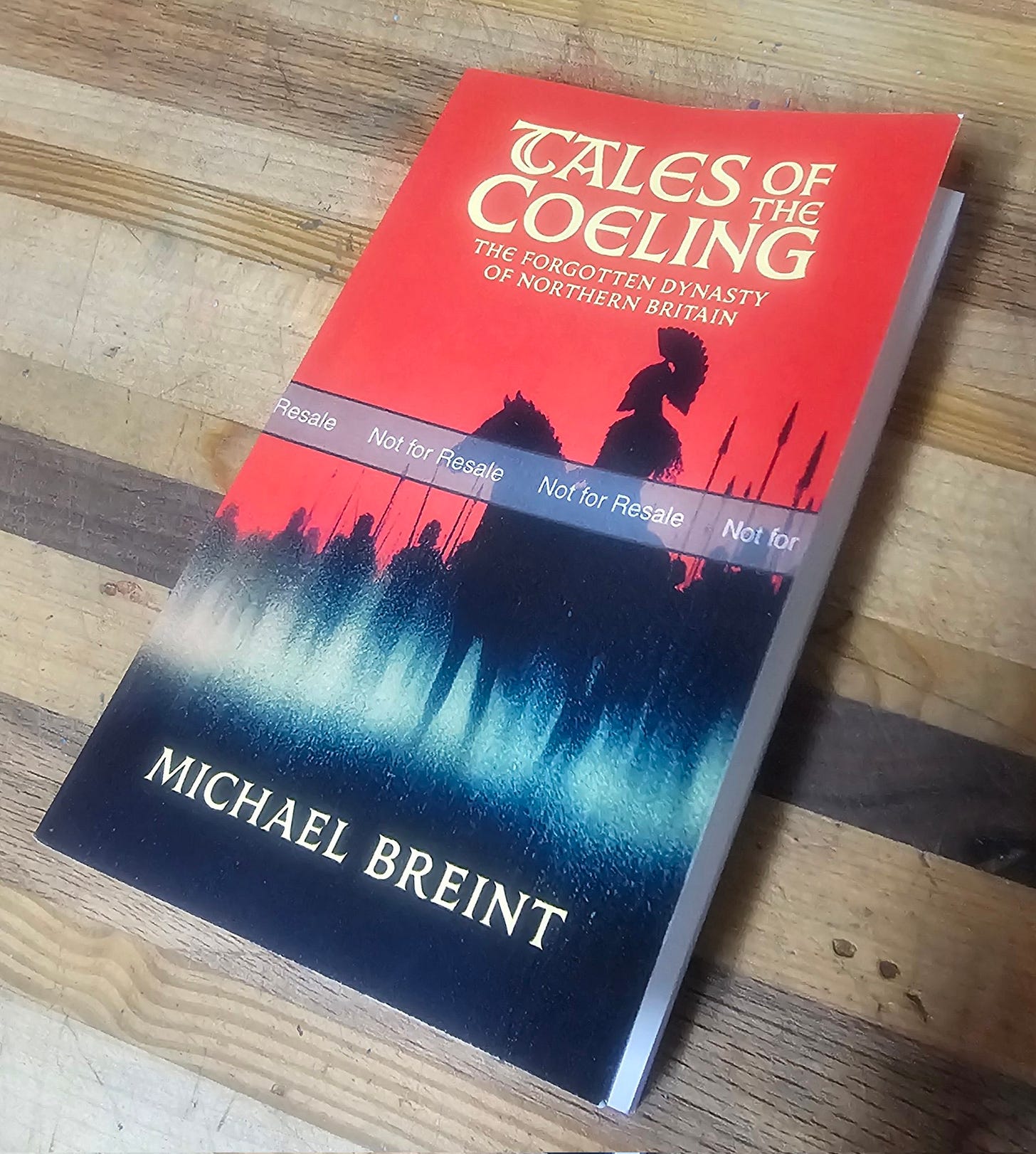Warlords of the Britons: Cadwallon and Penda
New reconstructions, and news on an upcoming guest article.
My latest recreations of the warlords of the Brythonic Heroic Age are Cadwallon and Penda, two early 7th century warlords. My good friend
has an upcoming article reevaluating the origins of Wessex and Mercia, both shrouded in founding myth, and ripe with Brythonic names, so I thought it would be nice to present some reconstructions of Penda and Cadwallon, two rulers seemingly entwined by the common goal of subduing the power of the emerging Kingdom of Northumbria under Edwin. One naturally questions how this came to be, and the accepted theory is that Wessex and Mercia stem from a mixed population, possibly Brythonic nobles who adopted Germanic customs and led Germanic troops, founding essentially Germanic kingdoms. I will not delve into theories here, but instead want to present my most recent reconstructions, starting with Cadwallon.I will leave the reevaluation of Cadwallon’s lineage out here, as I have spoken on it before, from what we can glean however, he seems to have spent some time in exile in Ireland, if we are to believe a fragment of a poem directly attributed to Cadwallon from Peniarth MS. 21, from there he sailed for Priestholm, where he set up a temporary base where he was besieged by Edwin. Edwin was ultimately unsuccessful in his attack, and Cadwallon, allied with Penda, won the Battle of Cefn Digoll against him, sending Edwin back to the North. Cadwallon and Penda eventually met Edwin again, this time at the Battle of Hatfield Chase, where Edwin and his son Osfrith were killed. Another son Eadfrith was captured, and later killed by Penda. Cadwallon then began his domination of the North, eventually besieged by Osric of Deira, “In a strong town” (most likely York). The siege was destroyed when Cadwallon “sallied out on a sudden with all his forces, by surprise, and destroyed him [Osric] and all his army.” Bede then leads us into a period of a year where Cadwallon rules as a tyrant, no doubt tainted by political sentiment, though this may refer to a campaign to expunge the territory of Anglian power. During this time Cadwallon supposedly kills Eanfrith the new king of Bernicia while the later had come to negotiate terms of peace. Eanfrith was the son of Aethelfrith, the powerful precursor to Edwin, who drove Edwin into exile when he was only three years old. Eanfrith in turn was exiled when Edwin returned and took power, seemingly with the Picts, this led to his son Talorgan sitting for a time as king of the Picts1. Cadwallon eventually is defeated at the Battle of Heavenfield by Hadrian’s wall by Oswald of Bernicia, Eanfrith’s brother.
I will not spoil
’s upcoming reevaluation of Penda’s lineage, but he is a puzzling figure, with strong alliances with a Brythonic prince such as Cadwallon, and a lineage full of names of uncertain or legendary origin, as well as a notable reference from Brythonic poetry, Marwnad Cynddylan, which does not portray him negatively as one would expect. These uncertain origins lead to exciting possibilities, and I hope you will enjoy ’s article looking at this soon.Cadwallon and Penda feature in the longest story within my new anthology “Tales of the Coeling”, releasing later this month. “The Rising Flame” follows Cadwallon from his exile to Ireland, all the way to the Battle of Heavenfield, in an action packed short-story towards the end of the anthology.
You can read more in depth about Talorgan and the situation leading to his reign here.







LFG!
I can't wait to read p5ych0p0mp articles. I'm very excited for your books! I really enjoy your illustrations, your true to the evidence and treat the people of our past with great care and respect that I think gets very overlooked in modern day films, TV programmes and dramas. I can see the archaeological finds, and evedence in you art. It says alot that. I'm looking forward to finding out more about the woman of this time, as they are often the missing, or overlooked link! Keep up the fantastic work.